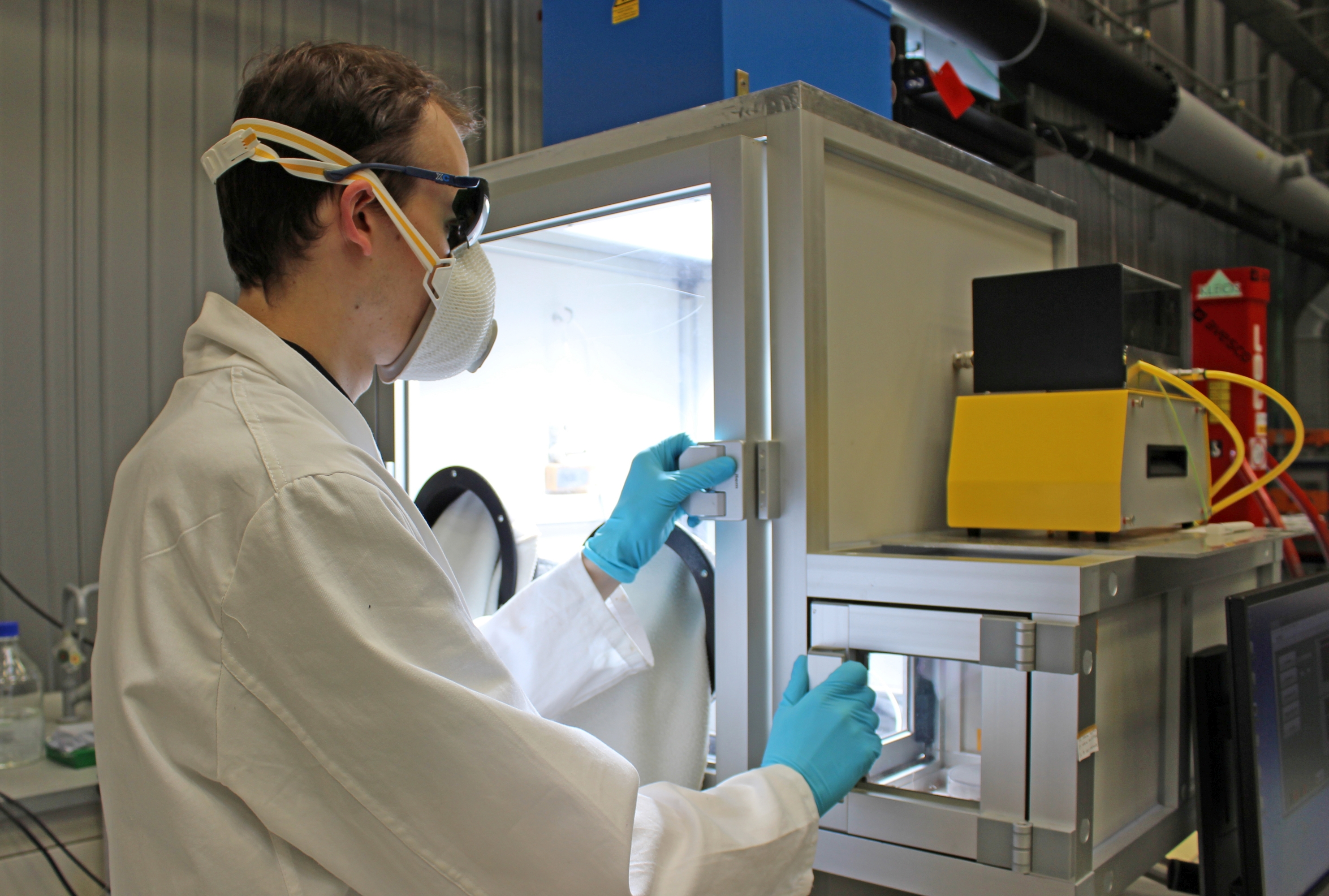Photovoltaic Test Bench Bringing the Desert to the Laboratory: Klemens Ilse of Fraunhofer CSP Awarded in Washington
Morocco, Saudi Arabia, Dubai: New solar parks are emerging in many deserts. However, Pollution of the photovoltaic modules with sand and dust presents a challenge. At Fraunhofer Center for Silicon Photovoltaic CSP, a process has been developed together with partners to simulate this pollution behavior in the laboratory - an important prerequisite in order to optimize the materials used and thus the yields. For his research on this issue Klemens Ilse from Fraunhofer CSP received the Best Student Paper Award from the IEEE PVSC 44.


The use of photovoltaics in desert areas offers numerous advantages: in the solar belt of the earth, solar radiation is twice as high as in our latitudes, and there are no conflicts in land use: the areas used for new solar parks are not suitable as residential areas or for agriculture , However, solar modules must also meet special requirements when operating in desert regions. In addition to the UV radiation and the large temperature differences between day and night, the contamination of the modules, referred to as "soiling" by specialists, is one of the reasons: If the desert wind blows dust and sand on the plants and then "stains" them by dewing on the module surface, Less light reaches the solar cells, resulting in less produced electricity.
»Polluted modules are primarily mechanically cleaned, for example, by wiping them, using brooms or cleaning robots. A better solution would be optimized module surfaces, which ensure that dust and sand can not adhere strongly at all and that natural cleaning mechanisms, such as wind, have a better effect. We want to help with the development of the appropriate materials,« says Klemens Ilse, who is currently writing his doctoral thesis at the Fraunhofer CSP on the soiling of solar modules in desert areas.
Precondition for this is a precise understanding of the soiling behavior. What composition, size distribution and structure do the dust and sand particles have? How do they react with the glass used to cover the solar modules? How does this process change when moisture comes into play, for example through dew in the morning hours? To address these questions, a soiling test bench was set up at Fraunhofer CSP in cooperation with Hochschule Anhalt. "This allows us to reproduce the dustiness of coated glass samples as well as the dewatering processes in the laboratory," explains the 27-year physics doctoral student.
How well the simulation works in the laboratory, Ilse has outlined in his essay "Comparing indoor and outdoor soiling", for which he was awarded the Best Student Paper Award of the IEEE Photovoltaic Specialists Conference (PVSC) 44 in Washington. His results show that the data from the laboratory correspond very well to the data measured during a five-month comparison test in the Atacama desert in Chile. The decisive advantage is that instead of several months, only a few hours are required in the laboratory in order to obtain the desired results with regard to contamination patterns or build-up of the dust layers. This accelerates the development of optimized glasses for the front cover of solar modules.
Microstructural investigations on dusty glass samples from Chile at the Fraunhofer CSP have also shown that different processes are based on the adhesion of particles: For the samples from Chile, it is not the cementation (baking of the particles by precipitation previously dissolved in water drops of dissolved salts) but a so-called "particle-caking". With this term, the Fraunhofer researchers describe a process causing the baking of larger particles by the rearrangement and compression of very small particles (less than 4 micrometers) during the condensation processes. Platelet-shaped clay minerals such as kaolonite fill gaps between larger particles and the glass surface. This results in a larger contact area and thus also greater adhesion forces for the large particles - the dirt thus adheres even more strongly to the glass surface.
Because the growing demand for photovoltaic solutions for desert regions requires uniform standards for dusting tests, the Association of German Engineers VDI and the German Institute for Standardization DIN have just set up a standards committee, in which Klemens Ilse has the lead. Based on the recommendations of this committee, TOPAS GmbH, headquartered in Dresden, plans to develop a test bench and to launch it as a product in 2018.
 Fraunhofer Center for Silicon Photovoltaics CSP
Fraunhofer Center for Silicon Photovoltaics CSP